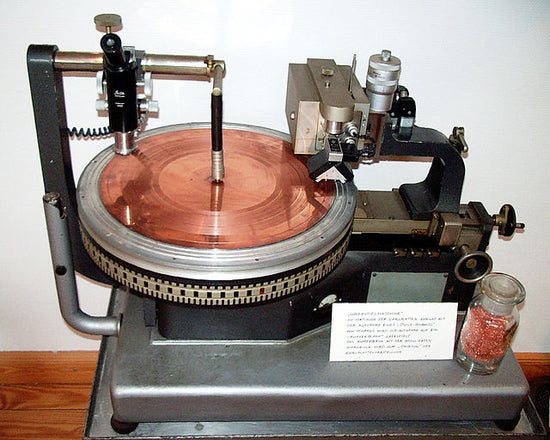A quadraphonic record, often referred to as a quadraphonic disc or simply "quad" record, is a type of audio recording format that was popular in the 1970s.
It was an attempt to create a more immersive listening experience. Quadraphonic audio aimed to reproduce sound in four discrete channels, as opposed to the two channels (stereo) used in standard audio recordings.
Quadraphonic records contain four separate audio channels: front left, front right, rear left, and rear right. These channels are intended to provide a surround sound experience, allowing audio to come from both the front and rear of the listener.


There were several competing quadraphonic formats, but many of them used matrix encoding to fit the four channels onto a standard vinyl LP (long-playing) record. Matrix encoding involves combining the audio signals in a way that allows them to be decoded into the original four channels during playback.
Quadraphonic Records: Did you know?
Quadraphonic systems are and were not limited to vinyl records. Quadraphonic is simply a ‘type’ of surround sound. The very first quadraphonic machines were analogue reel-to-reel tape recorders, which were made for use by audio engineers.
The very earliest four-channel systems being designed for home use began development in the late 1960s, and these are what ended up being released to be enjoyed through the medium of vinyl records, although not until the 1970s, and even then, they did not gain major popularity.
Quadraphonic records were designed to be played on regular stereo turntables and amplifiers, so listeners could enjoy them without specialized equipment. However, to decode the quadraphonic effect, a quadraphonic decoder or receiver was necessary.
Some of the most well-known quadraphonic systems
CBS/Columbia Records: CBS Records (now Sony Music) was a major player in the quadraphonic market. They used the "SQ" (Stereo Quadraphonic) matrix encoding system.
RCA Records: RCA Records (alongside JVC) introduced the "CD-4" (Compatible Discrete 4) quadraphonic system.
Quadradisc: This was another name for the CD-4 technology.
Many recording companies took on either of the above technologies, including names like Arista, Elektra, Harvest, EMI, Reprise and HMV.

Despite the initial excitement surrounding quadraphonic audio, it didn't achieve widespread commercial success. There were compatibility issues between different quadraphonic systems, and the market was divided among competing formats. Additionally, many consumers were satisfied with stereo sound and didn't see a compelling reason to upgrade.
While quadraphonic records are no longer a mainstream format, some audiophiles and collectors appreciate them for their historical value. There is still a niche market for quadraphonic recordings, and vintage quadraphonic equipment can be found among audio enthusiasts.
It's worth noting that modern surround sound systems, which are commonly used for home theatre setups and gaming, have evolved significantly from the quadraphonic concept, and typically use more than four channels for a more immersive audio experience.









